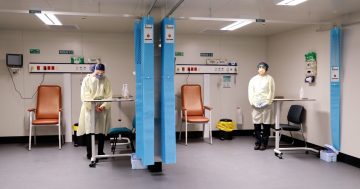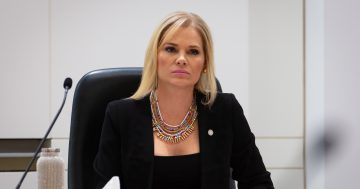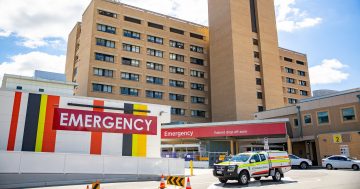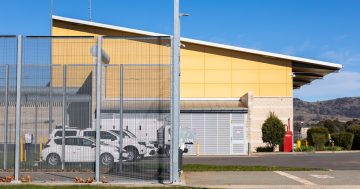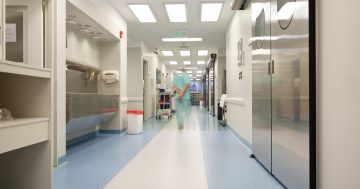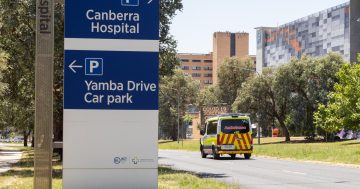
Clinical Director of the Canberra Region Cancer Centre Associate Professor Paul Craft said it was still unclear how the outbreak started, but it had been picked up in routine testing. Photo: Canberra Health Services.
It’s still unclear how COVID-19 found its way into a now-closed cancer ward at The Canberra Hospital, authorities have confirmed, but the outbreak is now “settling”.
The outbreak in Ward 14B was first detected through routine testing of staff, visitors and patients last week.
Ultimately, 14 cases were associated with the first significant outbreak in a cancer ward since the pandemic began, but no new cases had been detected in four days, giving authorities hope it was now under control.
Clinical Director of the Canberra Region Cancer Centre Associate Professor Paul Craft said the worst had seemingly been avoided at this point, but authorities remained “very concerned” that an outbreak had occurred in that ward.
“Several of those people [who tested positive] have recovered fully and have gone home already,” he said.
“No one’s got very ill from it, fortunately, so we haven’t had to transfer patients to the COVID ward, and no one’s got illness who would need to go to ICU, so we’re hoping there’ll be a good recovery for the patients.”
In an attempt to reduce transmission, COVID-positive patients were being isolated from others, Dr Craft said, and everyone who contracted the virus had been treated with antiviral medication.
Many of the patients on the ward are immunosuppressed meaning they could be at high risk of poor outcomes with COVID-19, but Dr Craft said the latter had helped to reduce this risk.
“That treatment works better if administered quickly and so we were able to treat all the patients effectively with those drugs,” he said.
The ward will remain closed until every case associated with the outbreak has recovered and investigations are underway to see how the virus entered.
“[Those investigations] may be able to help us determine if there are any holes we can plug, so to speak.”
Dr Craft said any patients in need of cancer treatment were being accommodated in other wards in the hospital.
Visitors are asked not to visit loved ones in hospital if they are unwell, in line with the current policy to reduce visitation where possible.
“Unless you’re really sick, of course; in that case, it’s best to come to hospital,” Dr Craft said.
This echoed pleas issued by ACT Health last week that people should leave the emergency departments for urgent care only as the hospital struggled to manage high demand.
Canberra Health Services Chief Operating Officer Cathie O’Neill attributed the pressure to high numbers of COVID-19 and non-COVID patients, as well as workforce challenges with many team members sick and unable to work.
“We’re not unique in this – every hospital in Australia is experiencing these challenges,” she said.
CHS has warned these kinds of pressures will likely persist throughout winter.
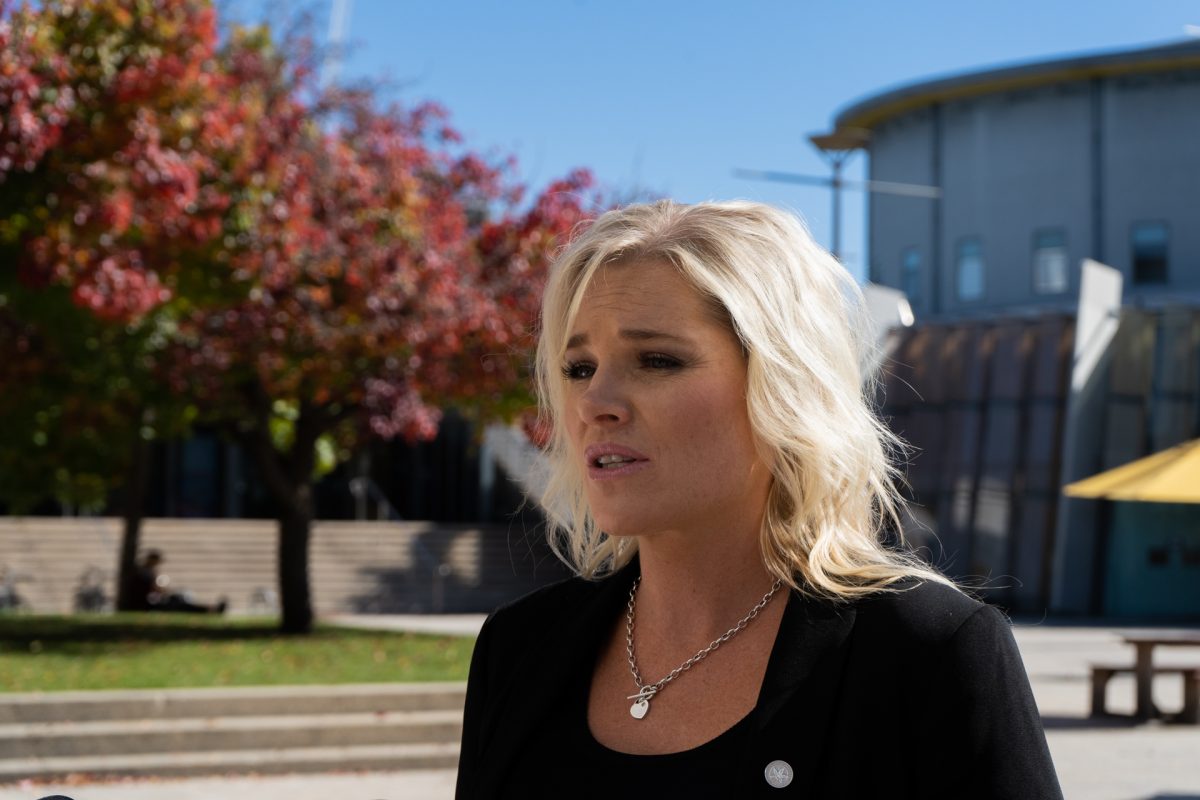
Opposition spokesperson for health Leanne Castley accused the government of not doing anything to fix the ACT’s notoriously-long ED wait times. Photo: Region Media.
But the Territory’s Opposition spokesperson for health Leanne Castley said it was clear the pandemic had simply exacerbated existing failures in the ACT’s health system which she argued was only getting worse.
“In the last week alone, Canberrans have been told to stay away from ED unless absolutely necessary and hardworking nurses and doctors are at breaking point,” she said.
Ms Castley said despite repeated promises to fix the ACT’s emergency department wait times which have consistently remained the worst in the country, nothing was being done.












